6.3. Friction
|
Perhaps some readers will be surprised to find a section on friction on a web page that is very chemically oriented, because friction is often considered a mechanical problem.
The key to understanding all these phenomena is the relationship between the friction and the temperature as a quantum phenomenon. Therefore, we want to describe the friction phenomenon with the means of energy quantization and show that the thermal differences between static and rolling friction can be well understood with the shelf model.
Video with a soundtrack: Comparison of Sliding and Rolling Friction |
||||
6.3.1. Details on sliding friction In the video we have focused on the field strength components that are parallel to the sliding surface (to the direction of motion). The following picture shows how you can imagine the field line course close to reality. This also leads to realistic ideas about the components of the fields. When two charge centers are orthogonal with respect to the friction surface, the component of the E field parallel to this surface is zero and it becomes a maximum in the middle between two such positions.For the quiescent particle, this results in a field strength wave, which acts like the alternating field strength of a photon. This is shown in the following image series in detail. |
||||
Zero crossing 1 |
Wave crest |
Zero crossing 2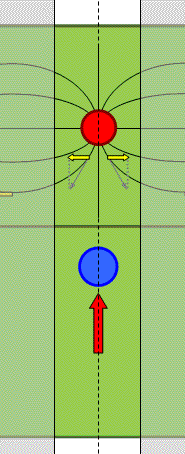 |
Wave trough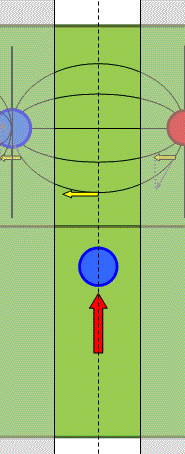 |
Zero crossing 3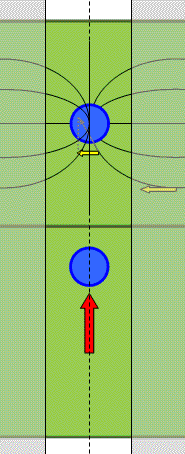 |
|
From wave crest to wave trough, the direction of the field vector reverses in the opposite direction. The blue-drawn static particle undergoes an alternating electric field with approximately sinusoidal alternating field strength parallel to the sliding friction surface and the relative movement. 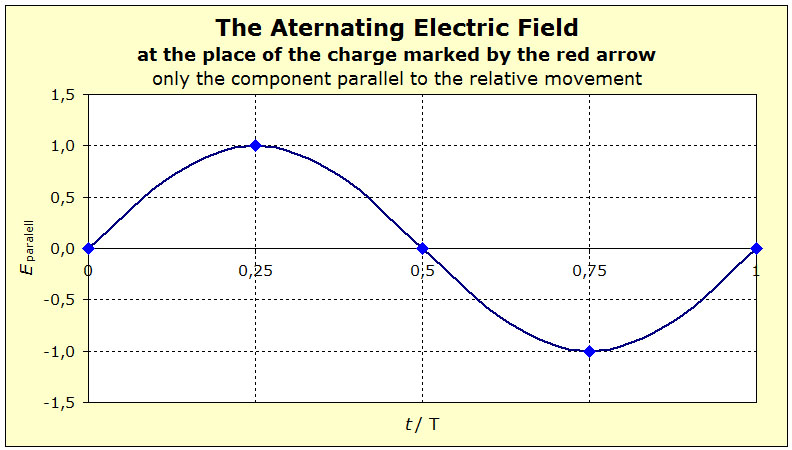 Quantum thermodynamically, this works like stimulating photons: the particles in the 'resting' material change to other stationary states of higher thermal energy. This results in a different distribution of the thermal energy over the achievable energy states for the particles. The different energy distribution represents a different (higher) temperature with greater half-value energy. |
||||
6.3.2. Details on rolling friction The following image series shows the rolling material passing a resting particle of the base and illustrates the main difference between rolling and sliding friction. Here, too, only the field strength vectors lying parallel to the relative movement, which lie directly on the friction surface, are considered. |
before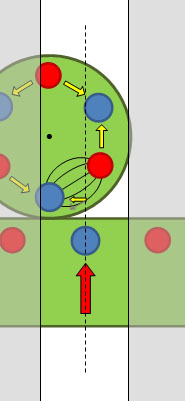 |
passing |
after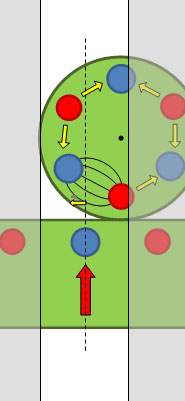 |
|
It is easy to see that the parallel component does not completely reverse the direction. In the shown example the original vector rotates in the passage area of the particle marked by the red arrow by about 60° (from -30° to + 30°). Then there is a much smaller fluctuation for the parallel component, which also depends on where the passage is situated. A smaller proportion of the kinetic energy is converted into thermal energy, leaving the temperature virtually unchanged. 
In the sliding friction, however, both surfaces heat each other, because of course, the stationary plane relative to the moved surface performs as well a relative movement and thus stimulates the particles of the moving body. Thus, both bodies expose each other over a large area to a "radiation influence". The above sketch illustrates this phenomenon. If both bodies are made of the same material, the temperature change in both will be nearly the same. This is not to be expected for different material composition. |
 Look at the above picture series:
Look at the above picture series: